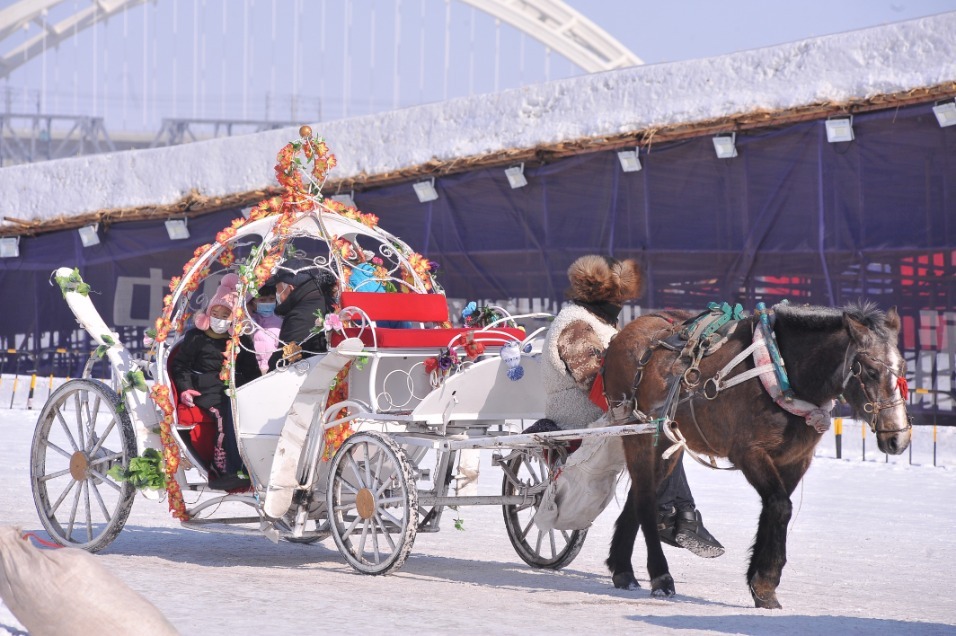


Tourists have fun at an ice-and-snow amusement park in Harbin, capital of Northeast China's Heilongjiang province.
Second- and third-tier cities may evolve as investment hotspots as projects diversify, the AECOM report predicts.
As of January 2021, around 80 new parks planned to open across China between 2021 and 2025, it says.
First-tier metropolises and emerging first-tier cities are best suited for international IP, while second- and third-tier cities are becoming popular for local-brand investment.
Second- and third-tier cities in relatively developed areas, such as the Yangtze River Delta and the Greater Bay Area, are expected to become investment hot spots for theme-entertainment products, the report says.
"From the perspective of product type and target market, the positioning of new attractions is expected to become more segmented and niche, with developers and operators no longer always pursuing 'large and comprehensive'," Chang says.
In the next five years, many leading international IP-holders, such as Universal Studios, Legoland and Nickelodeon, will continue to enter China's market, while cities are looking to partner with strong IPs to develop theme parks of different scales and positioning to become more competitive in the entertainment industry, AECOM points out.
That's especially as China is accelerating urbanization.
"With the repositioning of urban functions and ongoing industrial transformation, the improvements to image and the success stories of strong theme-park projects are attracting more attention than ever," Chang says.
 |

 Award-winning photos show poverty reduction achievements in NE China's Jilin province
Award-winning photos show poverty reduction achievements in NE China's Jilin province People dance to greet advent of New Year in Ameiqituo Town, Guizhou
People dance to greet advent of New Year in Ameiqituo Town, Guizhou Fire brigade in Shanghai holds group wedding
Fire brigade in Shanghai holds group wedding Tourists enjoy ice sculptures in Datan Town, north China
Tourists enjoy ice sculptures in Datan Town, north China Sunset scenery of Dayan Pagoda in Xi'an
Sunset scenery of Dayan Pagoda in Xi'an Tourists have fun at scenic spot in Nanlong Town, NW China
Tourists have fun at scenic spot in Nanlong Town, NW China Harbin attracts tourists by making best use of ice in winter
Harbin attracts tourists by making best use of ice in winter In pics: FIS Alpine Ski Women's World Cup Slalom
In pics: FIS Alpine Ski Women's World Cup Slalom Black-necked cranes rest at reservoir in Lhunzhub County, Lhasa
Black-necked cranes rest at reservoir in Lhunzhub County, Lhasa China's FAST telescope will be available to foreign scientists in April
China's FAST telescope will be available to foreign scientists in April